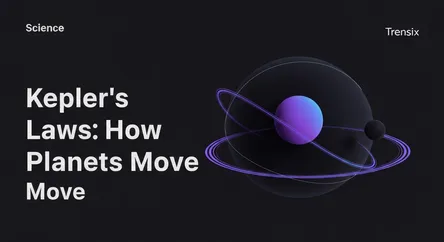Science
Kepler's Laws: How Planets Move

Discover Kepler's three laws of planetary motion, which describe how planets orbit the Sun. Learn why these fundamental principles of astronomy matter.
What is it?
Kepler's laws of planetary motion are three scientific principles describing how planets move around the Sun. Formulated by German astronomer Johannes Kepler in the early 17th century, they fundamentally changed our understanding of the cosmos. The first law states that planets travel in elliptical orbits, not perfect circles, with the Sun at one focus. The second law, the law of equal areas, explains that a planet moves fastest when it is closest to the Sun and slowest when it is farthest away. The third law, the law of harmonies, establishes a mathematical relationship between a planet's distance from the Sun and the time it takes to complete one orbit.
Why is it trending?
These centuries-old laws are more relevant than ever. They are the bedrock of modern orbital mechanics, crucial for launching satellites, planning missions to other planets, and discovering exoplanets. Telescopes, including the aptly named Kepler Space Telescope and the James Webb Space Telescope, rely on these principles to detect distant worlds by observing their orbits around their stars. As public interest in space exploration, new exoplanet discoveries, and satellite constellations like Starlink grows, so does the relevance of the fundamental laws that make it all possible.
How does it affect people?
Kepler's laws have a profound impact on daily life. They are essential for the operation of the Global Positioning System (GPS), which requires precise calculations of satellite orbits to function. They also underpin satellite communications, enabling global television broadcasts, weather forecasting, and internet services. Beyond technology, these laws marked a pivotal shift in human thought, helping to prove the Sun-centered model of the solar system and paving the way for Isaac Newton's law of universal gravitation. They are a cornerstone of our scientific understanding of our place in the universe.